If you have ever visited Japan or other countries in Asia, you may have seen the statue of a cat smiling and waving its paw at you.
This statue is already too familiar to the people of the Land of the Rising Sun and is affectionately known as the maneki-neko (or beckoning cat, lucky cat, money cat, happy cat, and inviting cat). The maneki-neko is believed to bring good luck to businesses…
What is Maneki-neko?
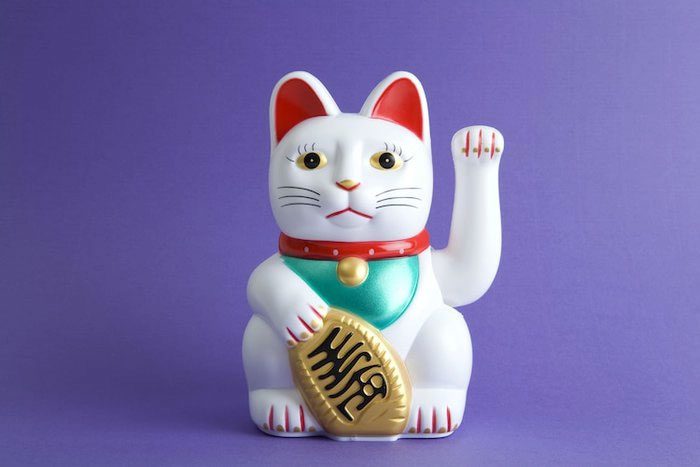
Maneki-neko depicts a Japanese Bobtail cat beckoning.
The maneki-neko is a popular small statue from Japan that is believed to bring good fortune and wealth to its owner. Typically made from ceramic or plastic, it features a Japanese Bobtail cat raising its paw in invitation.
Its paw is designed to move back and forth in a swinging motion. Some statues even have motors installed so they can wave all day long.
Maneki-neko is often displayed at the entrances of businesses such as restaurants, bars, and laundromats as a way to attract attention and invite customers inside.
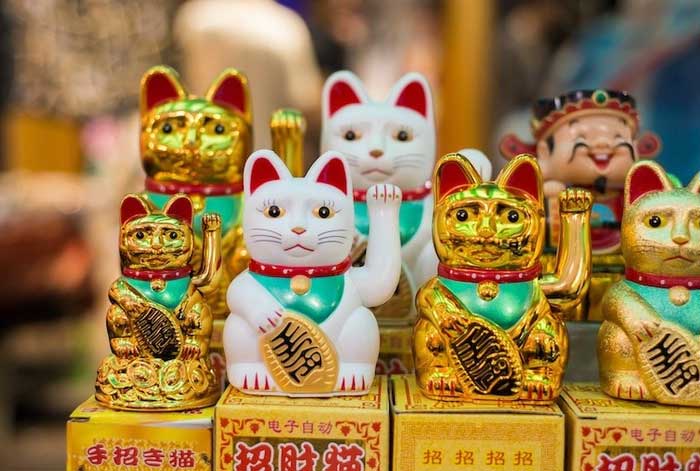
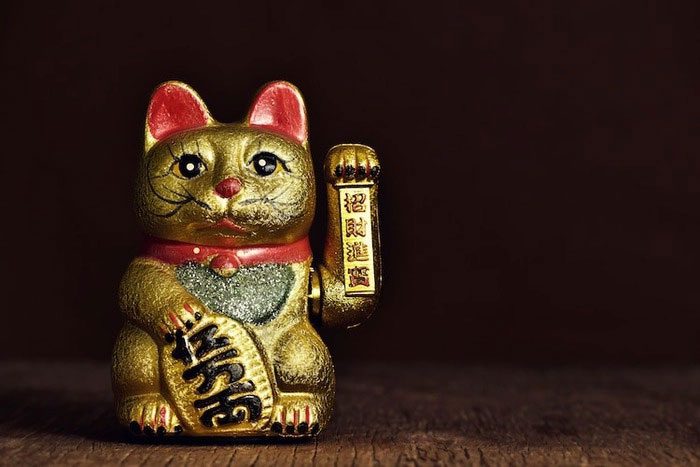
Maneki-neko is often displayed at the entrances of businesses.
The maneki-neko is typically crafted in a sitting position holding a koban coin, an oval gold coin from the Edo period in Japan. The coin is inscribed with the words “sen man ryou” (千万両), which means 10 million pieces of gold.
In Western culture, if one wants to beckon someone over, they raise their index finger with the palm curved inwards. The finger moves continuously (like a hook). However, in Japan, this beckoning gesture is made by raising the hand, palm facing down, and continuously curling the fingers.
This is why the paw of the maneki-neko is turned downwards. The raised paw can be either the left or right paw, depending on the owner’s preference. If the left paw is raised, it signifies that the maneki-neko is inviting more customers, while a raised right paw suggests an invitation for wealth and money.
Where Did Maneki-neko Originate?
Due to its common appearance in Chinatown districts, the maneki-neko is often mistakenly thought to have originated in China. However, it is believed that the statue first appeared in Japan during the late Edo period.
The exact origins of this lucky statue remain unclear, but one of the earliest records of its depiction appears in the ukiyo-e woodblock prints of Utagawa Hiroshige, produced in 1852. It depicts a Marushime-neko, a “variant” of the maneki-neko, being sold at Senso-ji Temple in Tokyo.
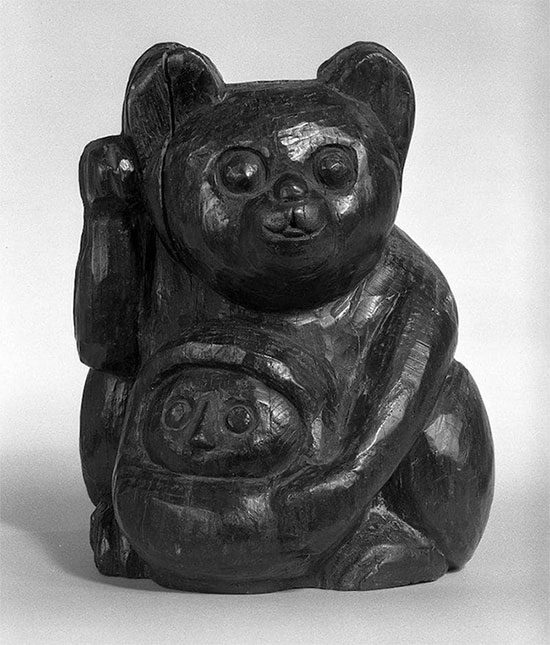
Wood mold for making maneki-neko from the Edo period, 18th century.
During the Meiji era, the maneki-neko was mentioned in a newspaper article in 1876. There is also evidence that maneki-neko figures dressed in kimono were distributed at a temple in Osaka during this time. By 1902, an advertisement for maneki-neko indicated that this lucky statue had become a popular commercial item around the early 20th century.
The Legend of the Lucky Cat in Japan
In Western culture, house cats are simply adorable pets. However, in Japanese folklore, cats are believed to have protective powers and symbolize good luck. Therefore, it’s no surprise that the maneki-neko is considered a representation of luck.
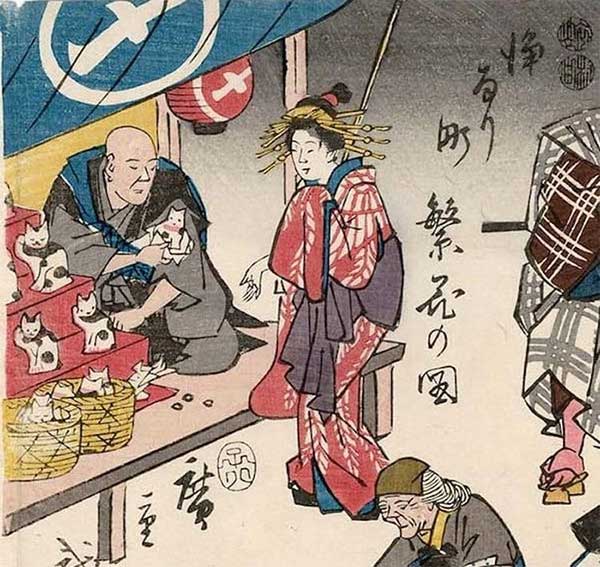
Ukiyo-e woodblock print by Utagawa Hiroshige.
According to Japanese folklore, in the 17th century, there was a poor monk living in the small Gōtoku-ji Temple in Setagaya, Tokyo, with his pet cat. They lived a quiet life until one day, a samurai lord named Ii Naotaka from Hikone visited the area.
While out hunting, a major storm hit, and the lord had to take shelter under a tree outside the temple. While there, he noticed the monk’s cat raising a paw, seemingly beckoning him to come inside the temple.
As the lord approached the cat, a lightning bolt struck the tree where he had just been standing. Grateful for the cat saving his life, Naotaka ordered that he would protect the temple. He helped repair, renovate, and build additional living space for the poor monk.
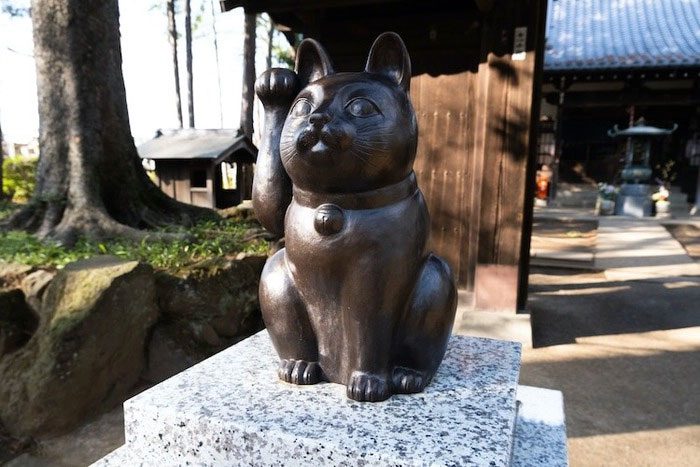
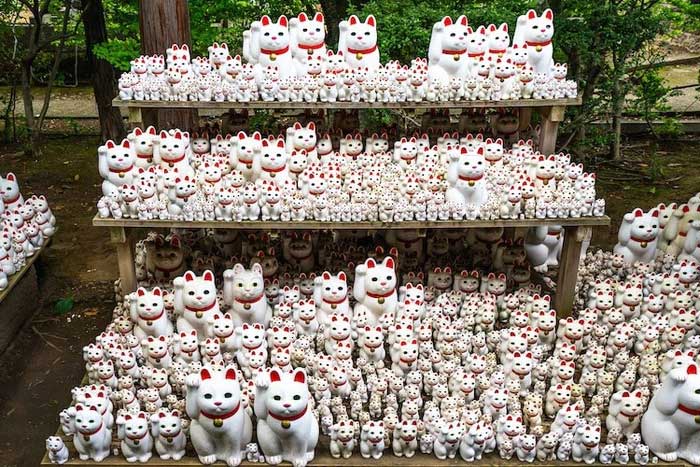
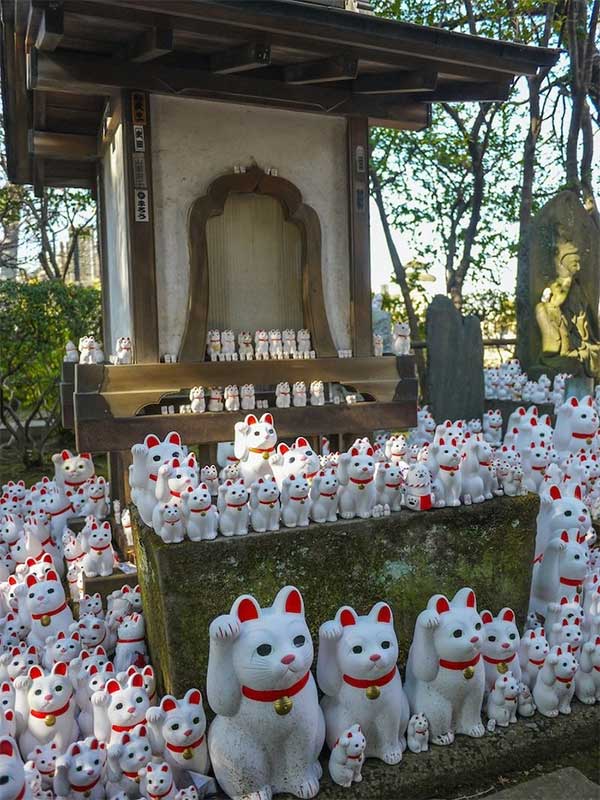
Maneki-neko also comes in various colors, depending on the owner’s wishes.
When the cat passed away, a maneki-neko statue was made to commemorate its life, and to this day, the temple is still regarded as a sacred place. This story is why many believe that beckoning cats are symbols of good luck.
Today, maneki-neko statues can be found in shops and businesses all over Japan and in many places worldwide. However, if you want to learn about its development through the ages, visit the Maneki-neko Art Museum in Okayama. This museum showcases a collection of over 700 lucky cat statues from various historical periods.
Every year in September, the Maneki-neko Festival is held in various cities across Japan. During this time, people take to the streets with their faces painted like cats.

In September, the Maneki-neko Festival is held in many cities across Japan.
There is also a street named Manekineko-dori (Beckoning Cat Street) in Tokoname City, Aichi Prefecture, where dozens of ceramic cat statues decorate the streets. And of course, Gōtoku-ji Temple – where the legend of the lucky cat began – is home to hundreds of adorable maneki-neko statues.
If you cannot make it to Japan, even in the United States, you can visit the “Lucky Cat Museum” in Cincinnati, Ohio, where you will find over 2,000 different versions of the lucky cat symbol.


















































